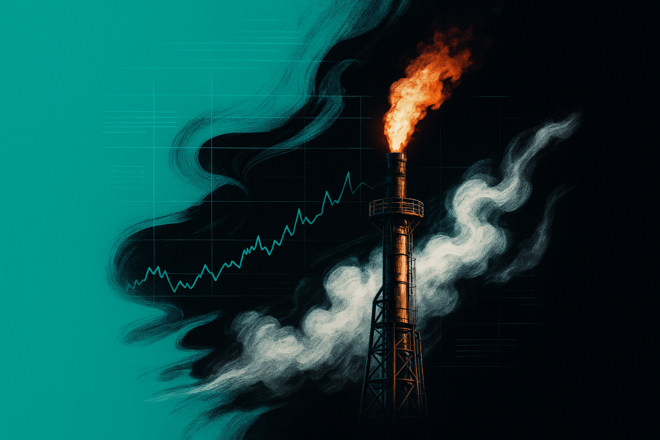Advertisement
Advertisement
Natural Gas News: Bearish Analysis Dominates Today, But Watch for Short-Covering Pop
By:
Key Points:
- Natural gas futures extend losses as cooling U.S. weather slashes late-summer demand and weakens market sentiment.
- Record-high U.S. gas production at 109.0 Bcf/day adds pressure, overshadowing modest gains in LNG and power demand.
- Weather forecasts show widespread U.S. cooling through early September, eroding air conditioning-driven gas demand.
Cooler Forecasts and Surging Supply Push Natural Gas Futures Lower
U.S. natural gas futures extended losses Monday, pressured by bearish weather revisions and elevated production levels. Prices dipped early in the session, confirming a minor reversal at $2.622, and remain vulnerable to a continued downtrend toward $2.574 if that level gives way. Despite a brief recovery, fueled in part by the expiration of the September contract, broader sentiment remains negative.
At 12:55 GMT, Natural Gas Futures are trading $2.679, down $0.017 or -0.63%.
Is the Weather Forecast Too Mild to Support Prices?
Latest weather models point to widespread cooling across the northern half of the U.S. through early September.
NatGasWeather reported comfortable highs in the 60s to 80s across the Midwest, Ohio Valley, and Northeast, reducing air conditioning demand. Southern regions, including much of Texas, are also seeing cooler-than-average readings.
Vaisala forecasts further cooling between September 4–8, extending from North Carolina to Northern California. These developments continue to undermine support for natural gas prices typically buoyed by late-summer heat.
Production at Record Highs Pressures Prices Further
Production remains a major headwind. U.S. lower-48 dry gas output hit 109.0 Bcf/day on Monday, up 6.3% year-over-year, according to BNEF. Active gas rigs held steady at 122 last week, just below the two-year high.
The EIA recently revised its 2025 production forecast higher to 106.44 Bcf/day, while the 2026 outlook now stands at 106.09 Bcf/day. Current output is already near record levels, compounding the impact of weak weather-driven demand.
Do LNG and Electricity Demand Offer Any Relief?
LNG flows provided a slight cushion, with net exports rising 13.5% week-over-week to 15.7 Bcf/day. Domestic power demand also showed strength. The Edison Electric Institute reported a 7.1% year-over-year rise in U.S. lower-48 electricity output for the week ended August 16. However, these pockets of demand have not been enough to offset bearish sentiment tied to weather and supply.
Can Tight Inventories Offer a Price Floor?
Last week’s EIA inventory build of +13 Bcf fell short of the expected +18 Bcf and was well below the five-year average of +35 Bcf.
While inventories remain 5.8% above the five-year seasonal average, they are down 3.0% year-over-year.
Still, this relative tightness has not translated into upward pressure, as bearish weather and surging supply continue to dominate market psychology.
Market Forecast: Bearish Near-Term Outlook
Natural gas futures remain under pressure with a confirmed technical reversal and no immediate bullish catalysts. Unless prices reclaim resistance at $2.748 and weather forecasts turn materially hotter, the market appears poised to retest support at $2.574. With production near record levels and demand cooling, the short-term outlook remains bearish.
More Information in our Economic Calendar.
About the Author
James Hyerczykauthor
James Hyerczyk is a U.S. based seasoned technical analyst and educator with over 40 years of experience in market analysis and trading, specializing in chart patterns and price movement. He is the author of two books on technical analysis and has a background in both futures and stock markets.
Advertisement
